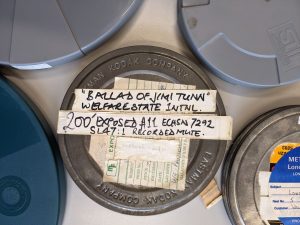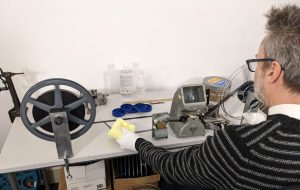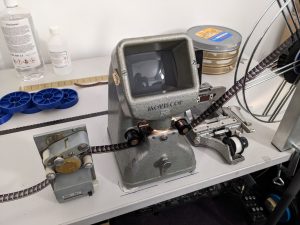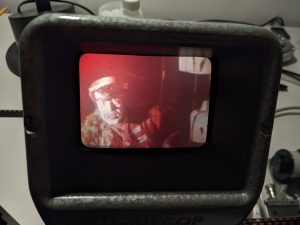In 2021, the Theatre Collection successfully applied for a Research Resources Award from Wellcome for the ‘Firestarters’ project to make available the archive of the arts organisation, Welfare State International (WSI). The project was developed in response to demand to explore WSI’s innovative methodologies from a broad spectrum of researchers and practitioners and the archive will provide evidence and inspiration for future research and practice.
Hello from the Firestarters (Welfare State International archive) team!
We are storming ahead to our ever-closer project deadline. We’ve been working hard cataloguing, digitising, rights management-ing, and we’re excited to reveal all – in time…
Taking up most of our time is the bulk of the task here – cataloguing – and so naturally our biggest news is that we have a full catalogue structure.

A large proportion of the Welfare State International archive – around 40% by our calculations – will be under WSI/5, or material related to the company’s productions. The widest range of material formats will also be available in this class, from handwritten and hand-drawn development notes to correspondence to scripts, scores, lyrics and technical drawings, as well as publicity material, press coverage, evaluations/reports and photographic/audiovisual material, providing a breadth of source material for understanding what it takes to run a complex arts organisation for so long, often reflecting changes in the financial, geographic and artistic landscape of British theatre since the 1960s.

Alongside our team of volunteers, without whom this would not be possible, we are well on our way through our list of productions and have been able to publish(!) the catalogue entries for the first over-120 productions (see here). We’ll be adding more progressively as we go through the almost 500 productions on the catalogue. The vastness of WSI’s work meant that we, in consultation with and guided by John Fox and Sue Gill, developed a list of what we’ve called our “Key Productions” – 23 productions that we hope are most representative of WSI’s output, from large-scale pyrotechnics to sculptural exhibitions, cross-country tours to long residencies. For these productions, we have chosen to catalogue in greater detail than the others, with more records at item and file level, allowing for more in-depth search and greater scope for digitisation.

Joining the team last summer as our project Digitisation Officer, Simon Goldstein has been working through our catalogued material, making digital copies of photographic material (prints, slides, negatives) alongside documents we’ve selected for digitisation from our productions series – at last count, 3860 physical items have been digitally preserved. This will allow us not only to conserve vulnerable material but create copies accessible from around the world, unlocking the collection to researchers worldwide and bringing in a wider audience to the collection and work of the entire Theatre Collection. By the end of the project, anyone will be able to access these digital copies where they’re available through the online catalogue, with some material already available – especially noteworthy are the vibrant array of posters already uploaded onto our Digital Archive. As the archive catalogue grows, so too will the amount of digital material accessible.
Greater access to the collection through cataloguing has also kept us busy helping with archival engagement, with two notable groups from earlier this year being the different interdisciplinary research groups funded by the Brigstow Institute Seedcorn Awards and BA Graphic Design students from the University of the West of England – with both sets of groups responding to both the work of Welfare State International as well the materiality of the archival collection.
So – for the lowdown – we’re getting there! There’s much more to do, but we’re excited (if also a bit daunted) by the not-so-distant prospect of a full catalogue that will bring more people into the world of the Welfare State.
Till next time,
Billy Harvell-Smith, Archive Assistant, Firestarters (the Welfare State International archive)










